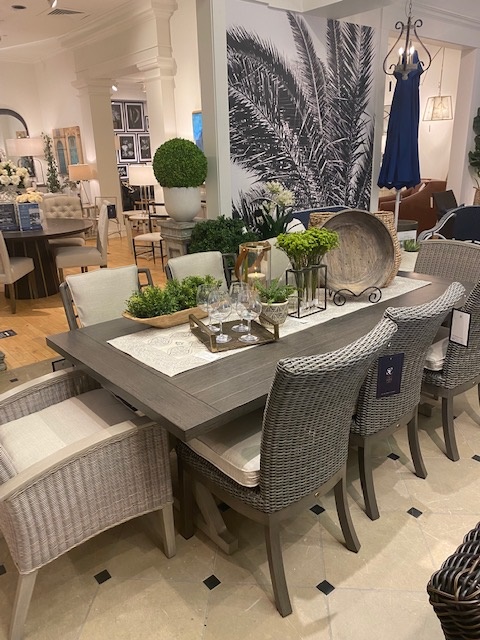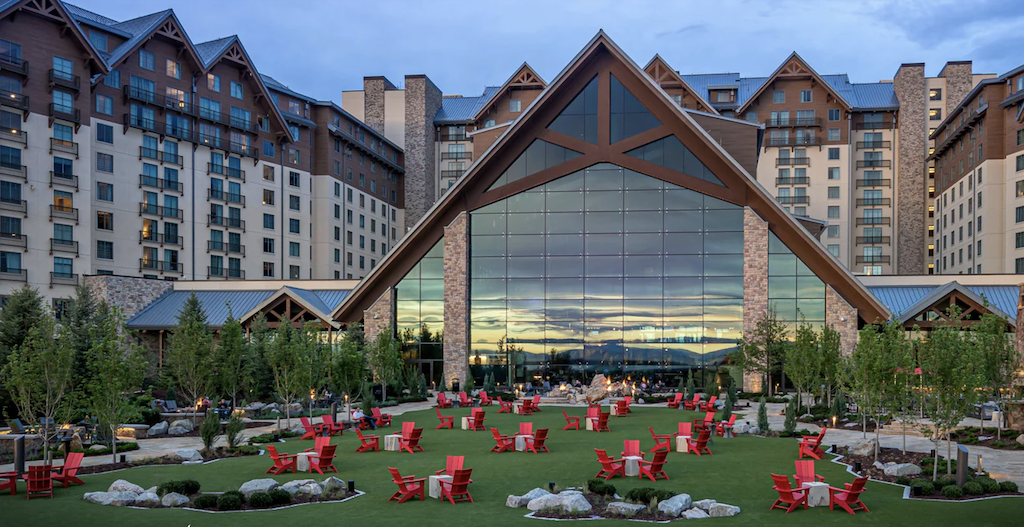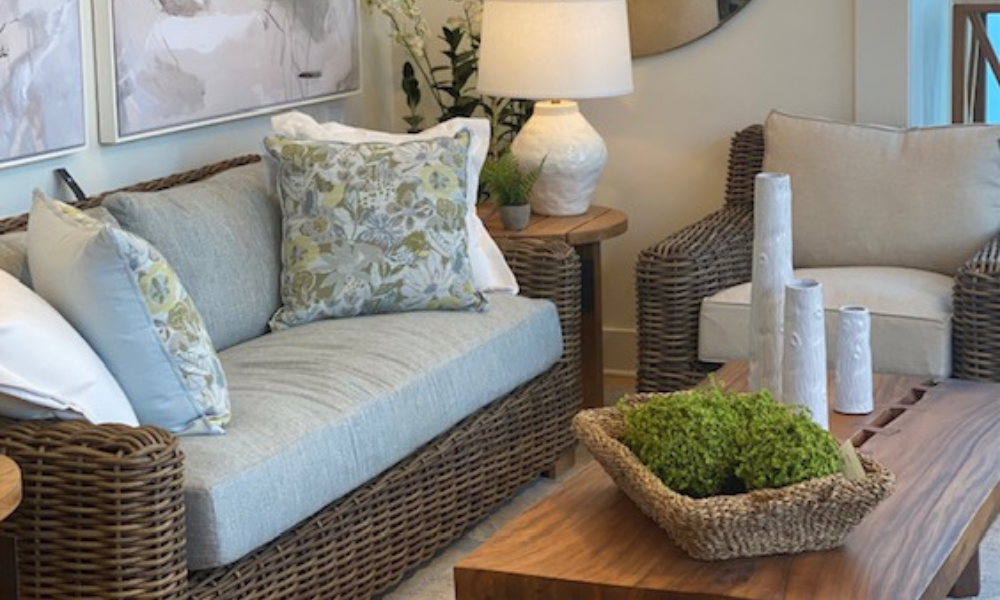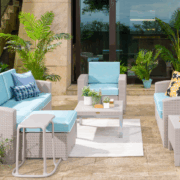To be clear, there’s more interest around Lake Michigan in bicycles and airplanes than there is in coral and flounder.
Summer Classics Chicago is the northernmost Summer Classics store there is and, well, it shows.

Bruce and Brenda Erikson
Bruce and Brenda Erickson have gained a niche up North—Summer Classics does, after all, come from Pelham, Alabama—by tailoring their store to the neighborhood where they live. Thus, no wall art or accessories with cheerful coral or big grinning flounder in the Windy City. What they do have is a mix of both outdoor and indoor, all from Summer Classics.
Right now, they are switching out the indoor furniture for the outdoor, in advance of the arrival of spring.
“We will go from 70 percent Gabby to 80 percent Summer Classics,” says Bruce Erickson. “Gabby is lights and mirrors and sofas, a division of Summer Classics that started about 10 years ago. Outdoor is still predominantly the main source of our Summer Classics business. By the first to mid-February, we do a full flip over to Summer Classics and when you walk in, you are walking into an outdoor store. We’re getting fluffed and buffed for all of our customers. We’re getting ready for that right now.”
This season continues the challenges that Erickson has seen in recent months in outdoor retail.
“We’re like everybody else—we call it the “F” words—fabric, frames, freight and foam,” says Erickson. “Fabric is the biggest issue right now, we are having to source out other alternatives. With frames, there are parts that we are low on. We do have shipments coming through Mobile and it is not hitting the backlog like in Los Angeles. With foam, before the freeze last year, they were running at 130 percent capacity. Now, they are running at 100 percent capacity and we need them at 150 percent capacity to catch up.”

Summer Classics has always been known for custom cushions, but the shortages have meant changing how business is done by keeping more stock fabrics on hand —and seeing if they will sell.
“I love that I can deal with a fabric where the customer can have it next week, but if we customize that fabric we try to show them ones that are in stock rather than those that will take 40 weeks,” Erickson says. “When you are selling to a customer, you love that fabric and you can have it in four or five weeks. Now we have a first choice and a second choice and a third choice in fabrics. If one runs into a snag, we have another one. We never used to have to do that and now we do it with everyone.
Erickson adds that another useful tactic is to keep people informed, especially if there is a delay in shipment—and to make them aware, at the front end, if there is a faster alternative to their original order.
“We get a list of cushions that were made up—a canceled order or wrong for that particular frame, but we can get it right now,” he says. “We are paying a lot more attention to that list than we ever did before. Sometimes it’s a compromise and sometimes it is better than the original choice was going to be.
Erickson regards full-line furniture stores as being one way to bring more notice to the category.
“A lot of people won’t go to an outdoor store but will go to their furniture store,” he says. “If they get exposed to it and then talk to us, I think we can sell them better than a full-line retailer can. We can offer a house call. We know what goes with what spaces we know.”

For now, Erickson’s store is beginning a program to repair cushions and frames on outdoor furniture as well as indoor, which is being done in part to give customers more confidence in making a purchase. Upgrading the exterior of the store is also in the plans because a high-end apartment complex is being built next door, which has patios and common spaces, all of which will need patio furniture.
“What we want to do is create an environment in the store that inspires customers,” he explains. “When they come in, we want them to be inspired by what they see—we’re not dumping something on the floor and hope it sells. We don’t sell groups so much as we want to curate a look. We want to give the customer something different from what they would find at Home Depot. When you offer inspiration to customers, that brings them back—not only with furniture but with accessories and new things that are coming in.”
That environment, the follow-up delivery, the service after the sale, are some things that online shopping can’t offer.
“You can buy furniture online, but you can’t see it all together,” Erickson says. “You can buy individual pieces but you can’t see it all set up. Developing that trust with the customer is critical and you can’t build that trust through a website.”








